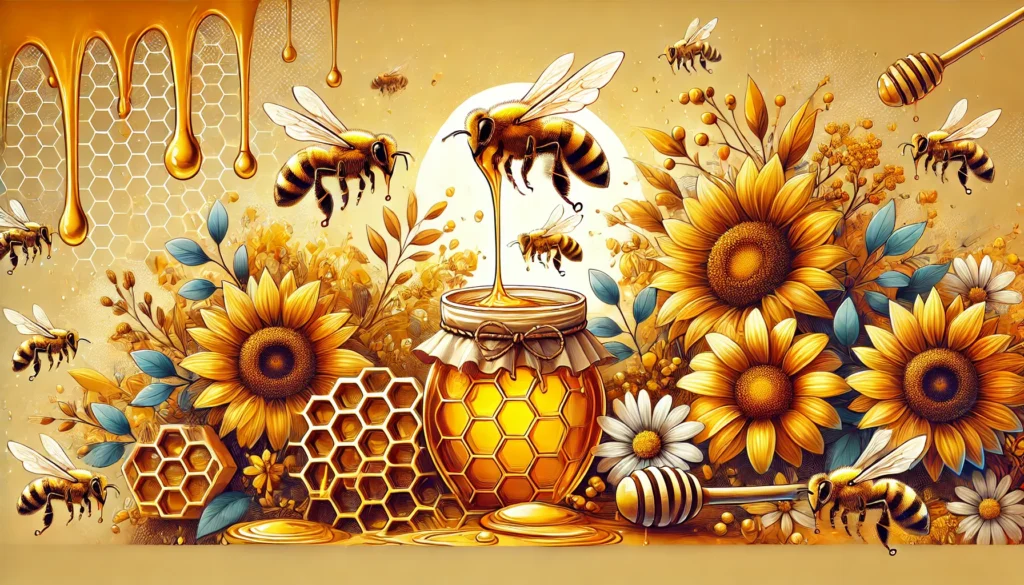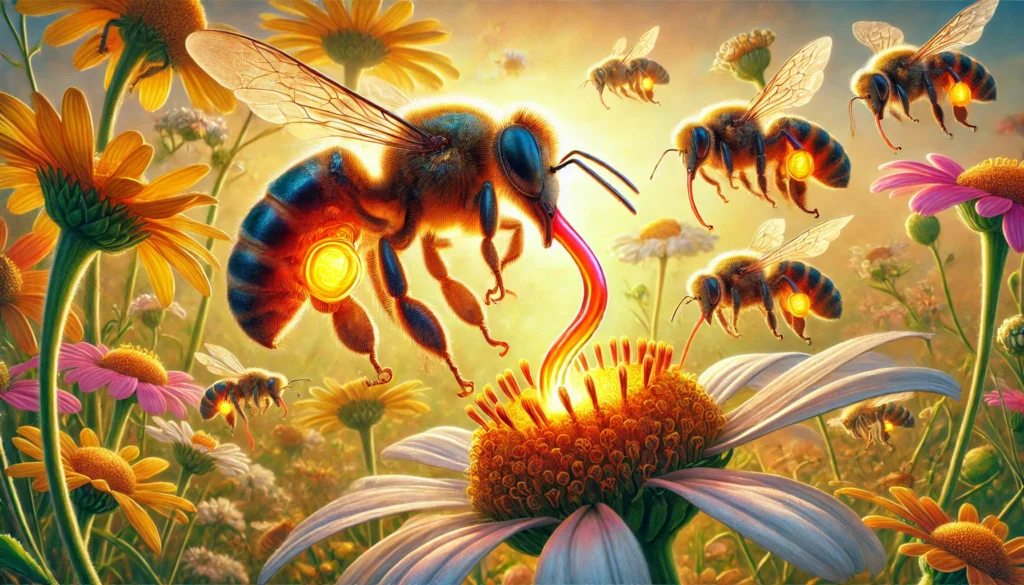
Who prepares the Honey and How?
Honey is prepared by Honey Bees through a remarkable natural process. Here’s how it happens:
1. Collecting Nectar:

Worker bees fly from flower to flower, using their long, tube-like tongues to extract nectar. Nectar is a sugary liquid produced by flowers to attract pollinators. Once collected, bees store it in a special “honey stomach.”
2. Breaking Down the Sugars:

Inside the bee’s honey stomach, different from digestive stomach, enzymes begin to break down the complex sugars in the nectar into simpler sugars, making it easier for the bees to process and preventing fermentation.
3. Depositing the Nectar: Once back in the hive, the bee regurgitates the partially digested nectar into the mouth of another worker bee. This process is repeated several times with different bees, further breaking down the sugars.
4. Evaporating Moisture: The nectar, now transformed, is deposited into hexagonal beeswax honeycomb cells in the hive. At this stage, it contains a high water content. Bees fan their wings over the cells to help evaporate the moisture, thickening the nectar into honey.
5. Sealing with Beeswax: Once the honey reaches the right consistency and moisture level, bees seal the cell with a wax cap, preserving it for storage.
Harvesting
6. Harvesting by Beekeepers: Beekeepers harvest honey by carefully removing the honeycombs from the hive. They uncap the cells by removing the wax layer, then use a centrifuge in a device called an extractor to spin and release the honey from the comb.
7. Filtering and Bottling: The extracted honey is filtered to remove any residual beeswax and other particles. Then, it’s bottled and ready for sale. Some honey is processed minimally to retain its natural qualities, while others may be heated or pasteurized.
Each step, from the bees’ gathering nectar to the beekeepers’ careful harvesting, ensures that honey remains a pure, natural product.